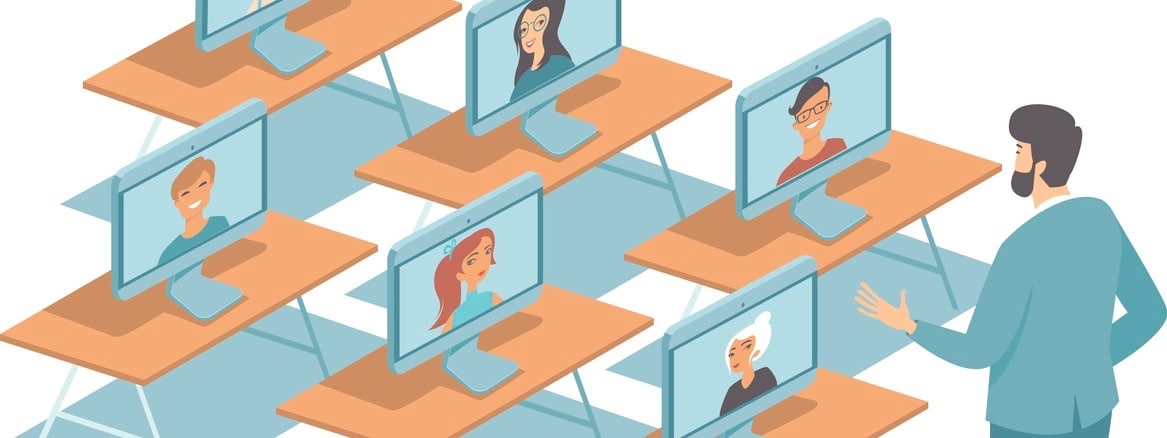For many people, one of the toughest lifestyle adjustments they’ve had to make is going from in-office positions to working at home. Meanwhile, many others are unable to work from home, and are forced to deal with the psychological strain (and physical risk) of reporting to work as usual. A new Consumer Intelligence Snap Poll on the stress points for Americans working from home vs. going into work from G&S Business Communications takes a look at the trials and tribulations of these changes—and explores how these employees are keeping spirits up, maintaining their productivity, and staying safe.
The new research finds that 26 percent of Americans who previously worked in a physical location are now working from home. Twenty-seven percent have continued to go to work in a physical location, and 13 percent have either permanently or temporarily lost their jobs due to the virus.
Top challenges for Americans working from home:
The top challenges for remote workers overall are finding a way to exercise, work through tech issues and communicating with colleagues
Among those Americans who started working from home due to coronavirus, top challenges include lack of exercise (45 percent), setting up technology (40 percent), managing time effectively (36 percent) and communicating with colleagues (31 percent). Among those with children under the age of 18 living at home with them, 63 percent say juggling to keep kids occupied and working at the same time is a challenge. Thankfully, just 12 percent of remote workers say rationing toilet paper in their household has been a challenge.
Parents with kids in the home are having a particularly challenging time working remotely
Sixty-three percent of parents with children 18 years old or younger are juggling to keep kids occupied and working at the same time. Forty six percent are juggling homeschooling, and 44 percent are navigating distractions from their children.
Many employees are rapidly adapting to working from home
Americans who have started working remotely due to the coronavirus are quickly adapting to their new working environment. In fact, 79 percent say it was at least somewhat easy for them personally to adapt to remote working, while 68 percent say it was at least somewhat easy for their company as a whole to adapt to remote working.
They are finding new ways to cope with being remote
Over half (53 percent) of new remote workers say they take breaks from work every few hours, and 42 percent have established a dedicated workspace in their home. Though lack of exercise and overeating has been a challenge for some Americans who are now working from home, over a third (35 percent) are spending time outdoors before, during or after work, and a fifth (20 percent) are finding time for mental health checks or meditation. Still, 28 percent find themselves working longer hours than they were before, and 12 percent are drinking more alcohol.

Thirty percent of new remote workers say they are using video meetings to connect with colleagues more often than they were two weeks ago
However, some are still adapting and building confidence in the use of video meetings:
- 30 percent worry that a family member or pet will interrupt their video meetings
- 24 percent don’t like video because they don’t want people to see their appearance
- 33 percent are more motivated to dress nicely than they normally would when working from home when they know they have video meetings during the day
- 18 percent worry that people will judge their home décor when they are seen on video
Remote employees are counting on their employers to provide support
Employees say their employers can support them as they work from home by covering data costs (41 percent) and communicating about company technology updates and trainings (36 percent). A quarter (26 percent) could use more social connection, saying their companies could provide opportunities for colleagues to virtually connect with each other through informal events.
Top challenges for workers going into physical locations:
Many Americans have no choice but to continue to work in physical locations
As of Saturday, March 21, of those employees who are still going to a physical location for work, 5 8percent say their job cannot be done remotely. Eleven percent are still going to work because they are not worried about contracting the coronavirus.”

Many employees going into work find it difficult to practice social distancing at work
Among those still going in to work, 52 percent are finding it challenging to maintain a safe distance from other people at work. Over a quarter (26 percent) are finding it challenging to maintain focus on job duties. Many are juggling staying stocked up with food and supplies at home (38 percent), including toilet paper (22 percent).
Still, they believe their companies care about them and are taking measures to protect them
The majority of employees who continue going into work believe their company/organization cares about the health of employees (77 percent) and that their company/organization has done a good job explaining to employees the safety precautions that are being taken at physical locations (77 percent).
Most companies have started taking precautions to protect the safety of their workers in physical locations
Although many employees are finding it difficult to maintain a safe distance from other people at work, 62 percent say that their employers are encouraging social distancing. Just over half say their company is increasing cleaning or sanitation efforts (56 percent) providing hand sanitizer for personal use (54 percent). Over a third say their company is reducing the number of staff on site at any given time (37 percent), canceling in-person meetings (37 percent) or offering more protective gear or resources (36 percent). Six percent say their organization isn’t taking any protective measures.

 Kate Threewitts, Senior Vice President, Human Resources at G&S offers Bulldog Reporter some additional tips for handling your displaced workforce, keeping them engaged—and productive:
Kate Threewitts, Senior Vice President, Human Resources at G&S offers Bulldog Reporter some additional tips for handling your displaced workforce, keeping them engaged—and productive:
What performance metrics should businesses initiate to measure the productivity of work-at-home employees who are doing so because of the coronavirus outbreak?
- Understand that there are various working styles at play; it is important to measure productivity in different ways. While goals and deadlines should always be the main metric to measure, making sure that people are staying healthy and taking breaks throughout the day to help them make their deadlines is also important. This will help them reset and refocus on the task at hand.
- Also, as the current environment continues to change, there should be a two-way communication for those employees who may be juggling multiple things at once, i.e., childcare, which may interfere with their traditional way of working. If there are employees who need more flexibility, offer to move deadlines, or an extra set of hands. Expressing flexibility in working arrangements and communicating a shared empathy for the challenges we’re all facing will go a long way in building trust and respect.
What are the most important adjustments to one’s work routine that newly displaced work-at-home staffers need to make but might not expect?
- Utilizing video capabilities is one of the biggest challenges for employees who are new to working from home. We found that 30 percent worry that a family member or pet will interrupt their video meetings, 24 percent don’t like video because they don’t want people to see their appearance, 33 percent are more motivated to dress nicer than they usually would when working from home when they have video meetings during the day, 18 percent worry that people will judge their home décor when they are seen on video.
- It is important to establish whether or not a video conference is needed and when, or if a simple phone call can take place. This is where communications come in, to help employees prepare and feel comfortable as this is the new normal.
What coping mechanisms do you recommend for staffers who are having a hard time adjusting to the work-at-home routine? What are the best ways to stay positive and productive?
- Make time for yourself. As mentioned earlier, it’s important to take a break from work every few hours to reset and refocus. It is also important to maintain a routine as you would if you were coming into the office. Having a dedicated work space is another way to adjust to working from home. This can help you feel like you are in your traditional work area. Here are additional tips to help people adjust to working from home, which can be found on our COVID-19 Blog, that we developed with the PR Council.




